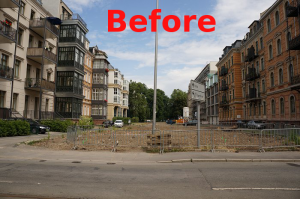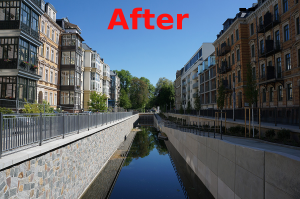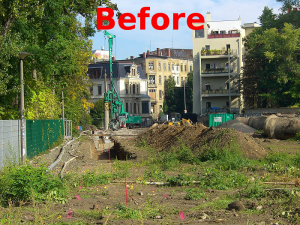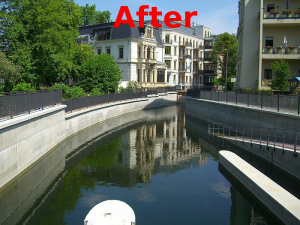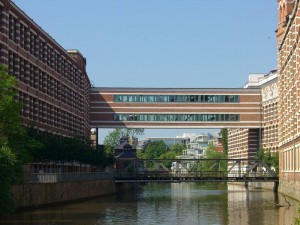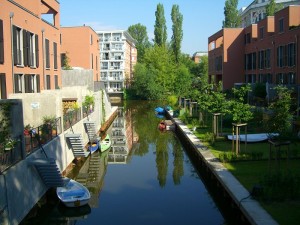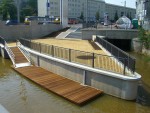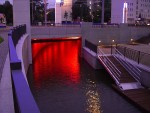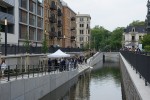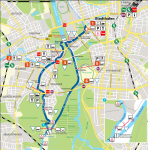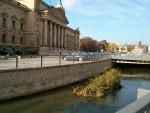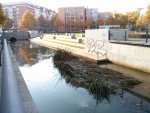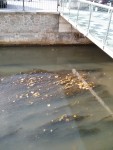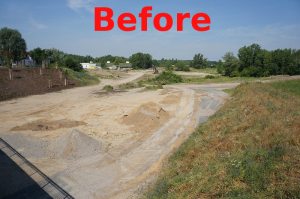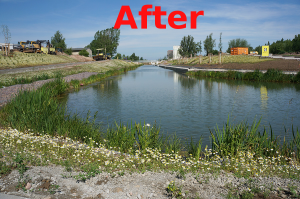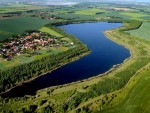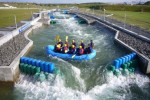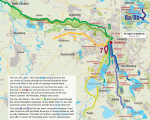Restoring degraded, concrete-encased urban streams is essential for healthy ecosystems and resilience to the coming impacts of climate change. In this area, the eastern German city of Leipzig has been busier than most.
The city of Leipzig, once home to Bach, Wagner and Mendelssohn and in 1989 a crucible of sorts for the Peaceful Revolution that led to the reunification of East and West Germany, has made itself a world leader in urban stream restoration over the last two decades, very much under the radar. Since the late 1990s the city has been reviving streams and canals that have been buried in underground pipes and paved over for the last 50 years, or simply silted up with mud, both in the city center and surrounding countryside. The formerly sooty, crumbling city core is now crisscrossed by tidy canals that, despite their intensely un-natural urban context and industrial history, are intended to provide at least some of the functions of natural streams.
Outside the city, no less than 26 lakes created by the closure of all but one of the area’s open-pit coal mines are being natur-ized (it’s not restoration per se because they were never natural lakes) and connected by natural and artificial waterways and locks to create a region-wide network entirely passable by small recreational boats and, it is hoped, fish.
Uncovering paved-over streams – known as daylighting – is prohibitively expensive, yet Leipzig has daylighted a dozen or two reaches across a good handful of streams and canals.
Much of the daylighting and restoration has been in the city center which is crisscrossed by canals, small rivers, and former mill races. Channels have been restored, modernized and landscaped, with emphasis on public access to the water in the form of bankside esplanades, parks, walkways and boat launches.
Click to enlarge…
Vegetation on artificial islands and in the channel beds, and fish ladders, are initial stages of creating aquatic habitat for migratory fish.
Recreation and tourism on the 26 lakes and their connecting rivers and canals is being emphatically promoted.
Outside the city, streams and rivers are being restored to more natural states, with shallow-sloped, vegetated banks and floodplains that serve as natural flood prevention; meandering courses; and a diversity of flow characteristics and in-stream habitats created by such features as large woody debris and a healthy diversity of pebble and boulder sizes and arrangements. Of course, this kind of renaturing is impossible in wholly concrete former mill races lined by buildings in an urban center. However, in these waterways the city has installed fish ladders and vegetation – both in the channel and on artificial islands – in preparation for the longer-term possibility of restoring migratory fish passage as the region-wide restoration becomes more complete.
Links
Tourism information – English and German
Great photo tours of the streams (German-only but it doesn’t matter – there are many good photos)
Luppe River restoration – German-only
Photos: leipzigerneuseenland.de, leipzig-dasdorf.de
